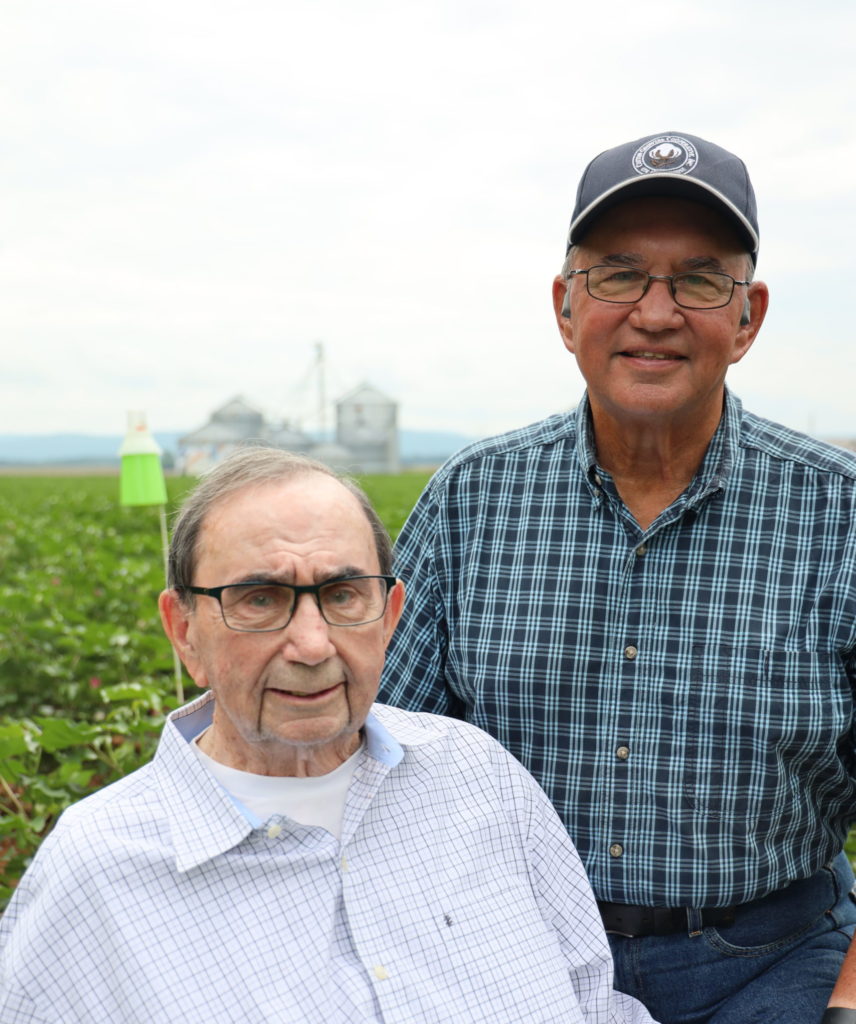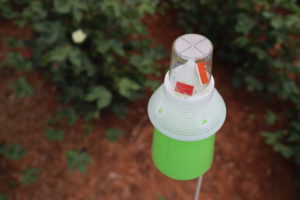Boll Weevil Program Continues To Pay Dividends

By Marlee Moore
A program implemented in the 1980s is still paying dividends for Alabama cotton farmers. In fact, most wouldn’t be able to grow the snowy crop without their decades-long investment in boll weevil eradication.
“The Boll Weevil Eradication Program (BWEP) is the best of programs that involves federal and state governments plus private industry,” said Madison County farmer Mike Tate, who advocated for the program in its early years with his father, Homer. “It was a true joint effort. Our fight now is to make sure the boll weevil is not reintroduced in our state.”
Alabama farmers pay a small, mandatory fee ($1.25 per acre of cotton planted) for monitoring costs to prevent another infestation. Annually, Alabama Boll Weevil Foundation staff place weevil traps in fields of young cotton.
The bright yellow-green traps mimic the color of young cotton plants and attract the weevils. Traps sport a white, conical cap topped with a clear plastic cover. An artificial pheromone in the collection chamber draws in weevils, which are killed thanks to an insecticide strip inside the trap.

The boll weevil was last spotted in Alabama fields in 2003. Meanwhile in south Texas and Mexico, cotton farmers continue combatting the 1/4-inch beetle, which chews into cotton bolls using a long, curved snout. After puncturing the plant, the pest deposits eggs, ultimately destroying the unripe cotton boll, or square.
The weevil’s life cycle is less than three weeks, and each female can lay up to 200 eggs, wreaking widespread havoc across fields and significantly lowering yields.
Farmers like Tate understand the annual payment’s importance but are concerned a generation of farmers who didn’t spend entire seasons spraying fields every five days fully appreciates the program’s effectiveness.
“A large number of our growers are young enough that they’ve never dealt with boll weevils and don’t know why we pay that fee,” said Tate, 66, a former National Cotton Council chairman. “If we don’t have that monitoring program, boll weevils could be widespread again before we knew what was happening.”
The boll weevil entered the U.S. from Mexico in the late 1800s and crawled across the country naturally by factors like wind.
Statewide weevil presence was noted in 1917. Over the next 80 years, Alabama cotton producers lost an average of $30 million annually to the boll weevil alone, according to Alabama Extension.
The BWEP started in September 1987 in Alabama and implemented change through biological, chemical and cultural methods. This included destroying stalks after harvest to remove the weevil’s habitat.
By summer 1995, no economic loss to boll weevils was recorded in Alabama. Nationally, 98% of cotton acreage is boll weevil-free.
“The BWEP worked the way it should have,” Tate said. “It really worked beautifully. It doesn’t get the credit it deserves.”
After eradication, cotton producers have seen increased yields and environmental benefits, along with reduced insect control costs. Researchers now focus on other issues to increase yields, pump up productivity and lengthen the growing season.
Alabama Farmers Federation Cotton Division Director Carla Hornady said the state’s largest farm organization works with national partners to protect essential programs like the BWEP and other tools farmers need to maintain healthy crops.
“Modern farming requires insect suppressants. If those tools are taken away, it’s concerning how quickly insect issues, like the boll weevil, could get out of hand,” Hornady said. “That’s why we need funds in the BWEP Foundation account — to monitor, prevent and possibly fight. We have to make sure the worst doesn’t happen.”
To learn more, contact Hornady at chornady@alfafarmers.org.
